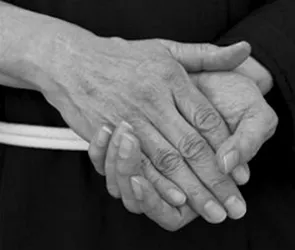
Hair Today, Gone Tomorrow: Early Diagnosis is Key to Treating Hair Loss In Women According to The American Academy of Dermatology
News ReleaseHair Today, Gone Tomorrow: Early Diagnosis is Key to Treating Hair Loss In Women According to The American Academy of DermatologyADVANCE/NEW ORLEANS, March 21 /PRNewswire/ -- For most people, and especially women, hair plays an important part of their overall appearance. In the United States and in most societies, beautiful hair is admired and emulated. But for an increasing number of women, unexpected hair loss can be devastating and hard to treat if it is not properly diagnosed. Speaking today at the American Academy of Dermatology's 57th Annual Meeting in New Orleans, dermatologist Amy McMichael, M.D., Wake Forest University, discussed the common causes of hair loss in women and the importance of early diagnosis in treating the condition. "Women usually pay pretty close attention to their hair and often notice signs of thinning or unusual patches of hair loss," said Dr. McMichael. "The problem is that if they talk about hair loss with one of their doctors who may not be quite as familiar with the early warning signs of hair loss as a dermatologist, they might be told that their hair loss is merely 'hereditary thinning' or 'hormonal' instead of really getting to the root of the problem." There are several different types of hair loss that women may experience, and treatment depends on the correct diagnosis. Typically, dermatologists diagnose hair disorders by a thorough history, exam, biopsy and categorization. Alopecia areata is characterized by hair falling out, resulting in smooth, round patches on the scalp. In some cases, alopecia areata can cause the complete loss of scalp and body hair. The condition is most common in people under 30. Another type of hair loss that is prevalent in more than 50 percent of patients over 40 is androgenetic alopecia. Commonly referred to as female- or male-patterned baldness, androgenetic alopecia affects men and women differently.
In men, androgenetic alopecia is characterized by a receding frontal hairline and balding at the top of the scalp. In women, the frontal hairline is preserved and thinning over the front and top of the scalp is common. Androgenetic alopecia usually begins in women in their late 20s or early 30s. Telogen effluvium, or resting hair loss, is marked by diffuse hair loss that is not concentrated in one particular area of the scalp. Usually, telogen effluvium occurs three to six months after a triggering event such as childbirth, major surgery, crash diets, thyroid disease, a severe infection or high fever. In addition, hair loss can accompany flares of autoimmune diseases including lupus, diabetes and rheumatoid arthritis. Although alopecia can be influenced by hereditary and hormonal factors, weathering or hair breakage is one type of hair loss that is directly influenced by a person's behavior. Styling products such as perms, dyes, gels, relaxers and sprays can cause weathering. "The best way women can combat weathering is to change their hair care regimens and limit the use of heavy styling products to special occasions," said Dr. McMichael. "I also tell my patients to use moisturizing shampoos and conditioners and get their hair trimmed every six-to-eight weeks. In fact, hair stylists are often the first people to notice signs of hair loss or bald spots." Although hair breakage is common to patients who overuse harsh styling products, it could be a sign of a hair shaft abnormality. Dr. McMichael explained that there are genetic causes of hair breakage, but they are very rare and usually begin in childhood. Today, there are more ways to treat hair loss than ever before. Oral medications, topical creams, injections of corticosteroids, hair transplants, scalp reductions, skin flaps and behavior modifications are all successful methods to treating common forms of hair loss. "As with almost any type of medical condition, hair loss can respond well to treatment if it is caught early enough," said Dr. McMichael. "The key is paying close attention to any changes in the hair's appearance or texture and seeing a dermatologist for a correct diagnosis." The American Academy of Dermatology, founded in 1938, is the largest, most influential, and most representative of all dermatological associations. With a membership over 11,000+ dermatologists worldwide, the Academy is committed to:
For more information, contact the AAD at 1-888-462-DERM or www.aad.org. SOURCE American Academy of Dermatology CO: American Academy of Dermatology ST: Illinois, IN: HEA 03/15/99 11:00 EST |
| If you want to talk more about this or other hair care articles on HairBoutique.com or anywhere else, please post a message on HairBoutique.com's Hair Talk Forums.
|
Social Media Network Information
Please follow us on Twitter at: https://Twitter.com/HairBoutique. I look forward to meeting new people from all walks of Twitter and learning from their Tweets.

















